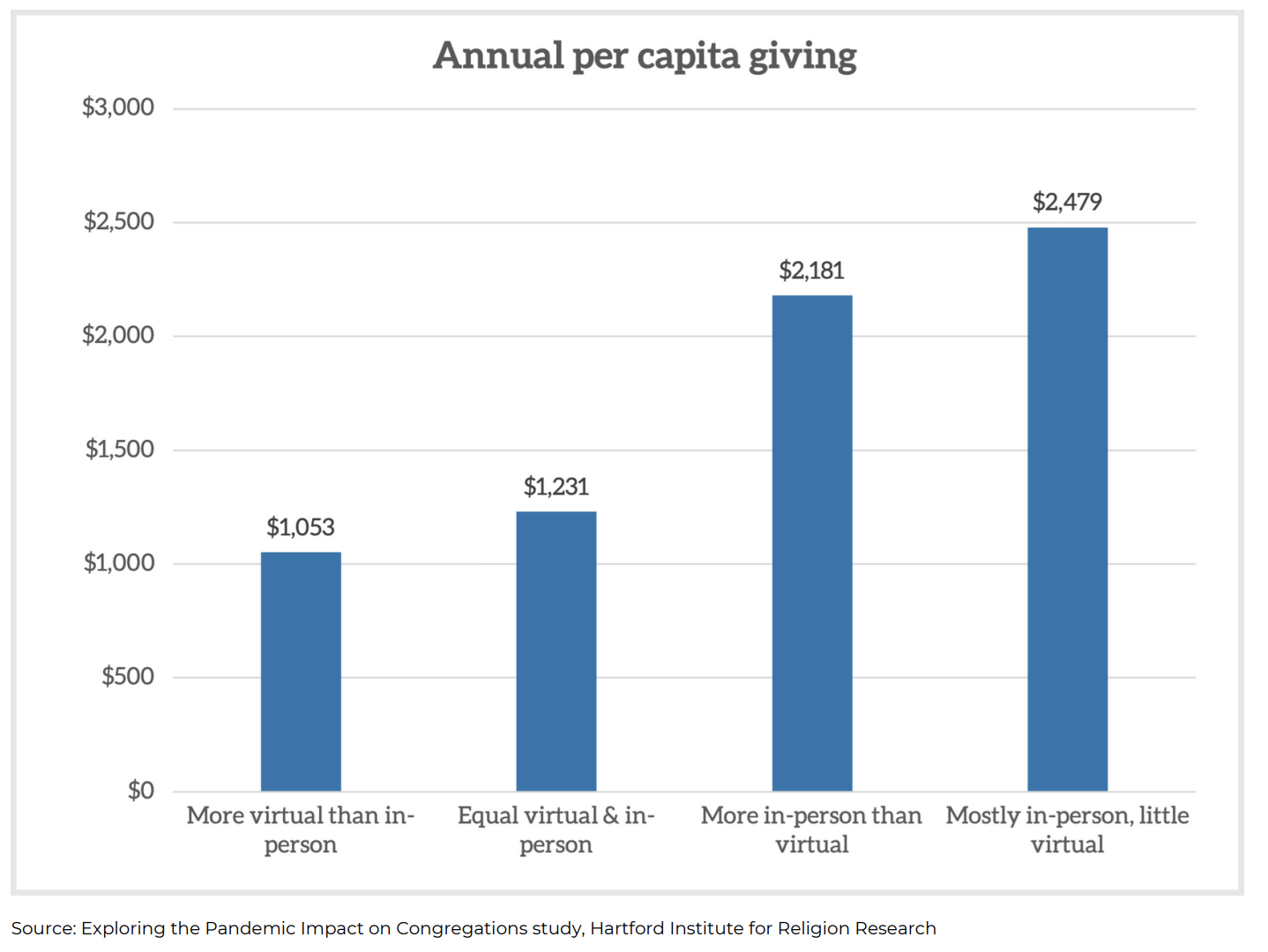The outbreak of COVID-19 in 2020 prompted lasting changes in the ways U.S. religious groups use technology in congregational life, according to a new study by Hartford Institute for Religion Research.
“The pandemic necessitated innovation in how congregations connect with their communities,” said Charissa Mikoski, a postdoctoral research fellow at the institute. “It’s clear technology has become critical, from online worship to electronic giving. Congregations embracing these tools appear well-positioned to thrive in the years ahead.”
Using data collected in the Faith Communities Today survey and numerous other surveys, the report traces how the embrace of technology has changed since before the pandemic through 2023.

“In 2015 — just eight years ago — when congregational leaders were asked about their opinion on the use of internet technologies like email, social media, texting, etc., 30% of them said these technologies ‘can be quite helpful but aren’t really crucial for the congregation’s vitality or success.’ Five years later, enter COVID-19 and suddenly many congregations had no choice but to implement these technological tools in order to survive,” the report notes.
Three quarters of congregations provided online or virtual worship in 2023 compared to only 45% before the pandemic — and with only half that group doing so consistently. Researchers also found 73% offered hybrid worship last year, compared to 2% who were online only. A quarter of services were in-person only.
“Catholic and Orthodox Christian congregations are most likely to have in-person only services compared to Mainline Protestant Christian or evangelical Protestant Christian congregations with nearly half of Catholic and Orthodox Christian congregations (48%) holding worship only in-person,” the report states. “Traditions outside of the Christian faith are more likely than Christian congregations to have online only worship with about 6% opting for this method.”

Hartford also reported a congregation’s size has a strong correlation with the likelihood it uses technology as a mode of worship. Those with 50 or fewer attenders were more likely to meet exclusively in person last year, while 92% of groups of 250 or more offered hybrid worship.
The most popular platforms for virtual or online worship were social media outlets (51%) and video hosting platforms (47%), followed by video conferencing (36%), audio platforms (7%) and television (1%)..
“In 2023, most of the congregations (96%) who offer virtual worship do so weekly or more often,” the report says. “Only a handful of congregations offer virtual worship less frequently than weekly. This is a dramatic change from data on congregations surveyed pre-lockdown in 2020 where only 26% of congregations who had a livestream of their services provided this option ‘frequently or always.’”

The study also says the use of technology shows no signs of abating in most U.S. houses of worship. “The group of congregations offering virtual worship were asked if they plan to continue this practice into the future and four out of five agreed that they will still have this option five years from now. Only less than 3% think they will not continue a virtual or online worship option while the rest are unsure. For the most part, it looks like virtual worship, or at least a version of it, is here to stay for many congregations.”
For churches that offer hybrid worship and track online attendance — which only about half do because of difficulties counting participants in livestream formats — growth rates were mixed, the study says. “Congregations that offer hybrid worship and have more of their worship attendees online as compared to gathered in person have more than doubled in size (102% increase) compared to their pre-pandemic numbers.”
But the growth rates diminish for congregations that have a majority of in-person worshipers. “Hybrid congregations who have many more in-person attenders than virtual attenders are roughly 10% smaller than they were in 2019,” the study says.
But the inverse was found to be true when congregational giving was considered. Groups with mostly virtual congregations reported a giving rate of slightly more than $1,000 per person, the Hartford report says.
“This amount increases as the ratio shifts toward more in-person attendees. Hybrid congregations who have many more in-person attenders than virtual attenders report a per capita of almost $2,500. This could suggest that in-person attenders contribute more financially to their congregation than their online counterparts.”

The study also detected an overall increase in the use of online giving methods since the pandemic, with 70% of congregations saying they never collected contributions online in 2015 versus only 31% who said the same in 2023.
“This is an example of the pandemic accelerating or reinforcing trends that were previously set in motion,” the report says.
However, the use of technology for non-worship events has decreased in most congregations after briefly spiking during the height of the pandemic.
“For example, the percentage of congregations that offer fellowship events either exclusively online or in a hybrid fashion has drastically decreased between 2021 (25%) and 2023 (5%) A similar pattern is evident with the other programs we asked about, namely community service opportunities, religious education for children, and youth programs,” the report explains. “In 2023, very few congregations offer online only or hybrid options of these programs.”


